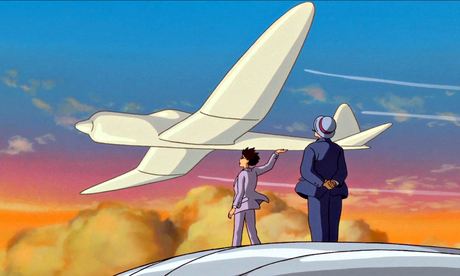
Hayao Miyazaki's 'final feature' (the master announced his retirement last year) is a breathtaking dream of flying crafted with hand-drawn attention to detail – a rich treat for the eye and soul alike. Inspired by the life of second world war Zero fighter plane designer Jiro Horikoshi, and the writings of Tatsuo Hori (the film is dedicated "a tribute" to both), this "work of complete fiction" plays out over a troubled historical canvas encompassing the great Kanto earthquake of 1923, years of depression, the tuberculosis epidemic, the descent into war – all of which create what the director calls "a sense of stagnation more intense than the one hanging over Japan today".
Yet against such a bleak background, ambition and imagination take flight. As a boy, nearsighted Jiro meets Italian aeronautical designer Gianni Caproni in his dreams and realises that although he cannot become a pilot, a career in engineering will give him wings. Triumphs and failures follow, interwoven with a heartbreakingly touching love story in which the wan Nahoko becomes Jiro's muse, grounding his head-in-air flights of fancy in the tangible soil of human contact, love, and inevitably, loss.
Although Miyazaki's films have always been appreciated by audiences of all ages (the likes of Princess Mononoke, Spirited Away and Howl's Moving Castle defy generational boundaries), The Wind Rises is a more grown-up feature than its predecessors, a far cry from the sublimely childlike joys of 2008's Ponyo. While the title (transposed from Paul Valéry's poetic cry "The wind is rising! We must try to live!") is joyous and the artwork often jubilant – particularly in the dream sequences – weighty issues of conflict, death and destruction lurk just beyond the rims of Jiro's spectacles.
Horrified by war, Miyazaki does not attempt to whitewash the military applications of Jiro's designs, merely to abstract them – as Caproni declares; better a world with pyramids than without. Fans of Miyazaki will see clear autobiographical elements in this depiction of a man devoted to a dream at any cost, an obsession which he himself admits possesses "an element of madness… yearning for something too beautiful can ruin you". On this evidence, it has done quite the opposite.

